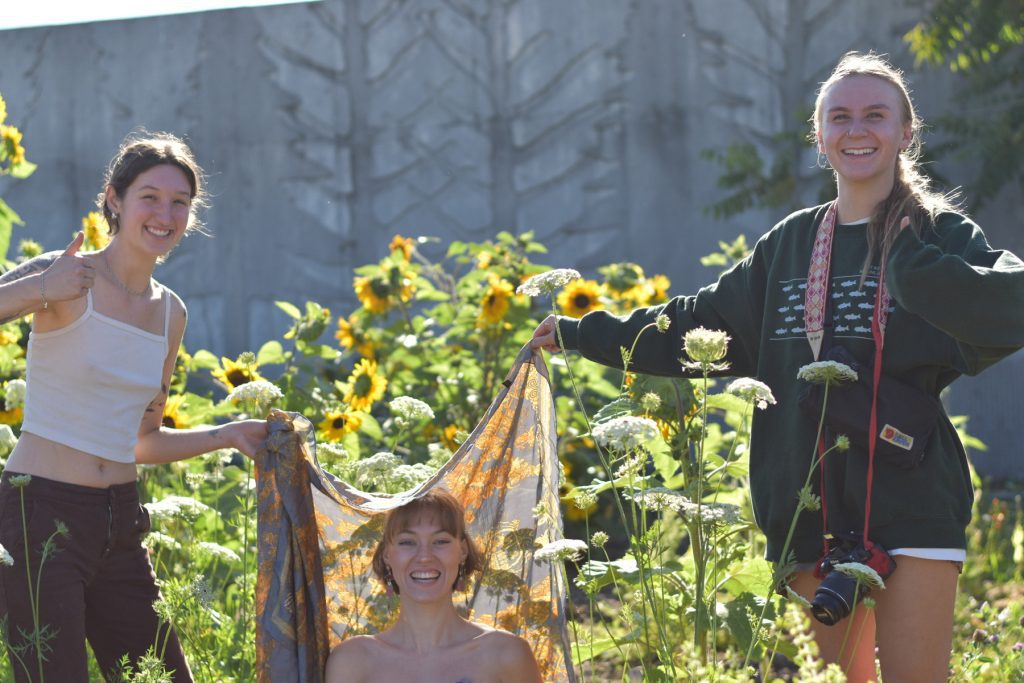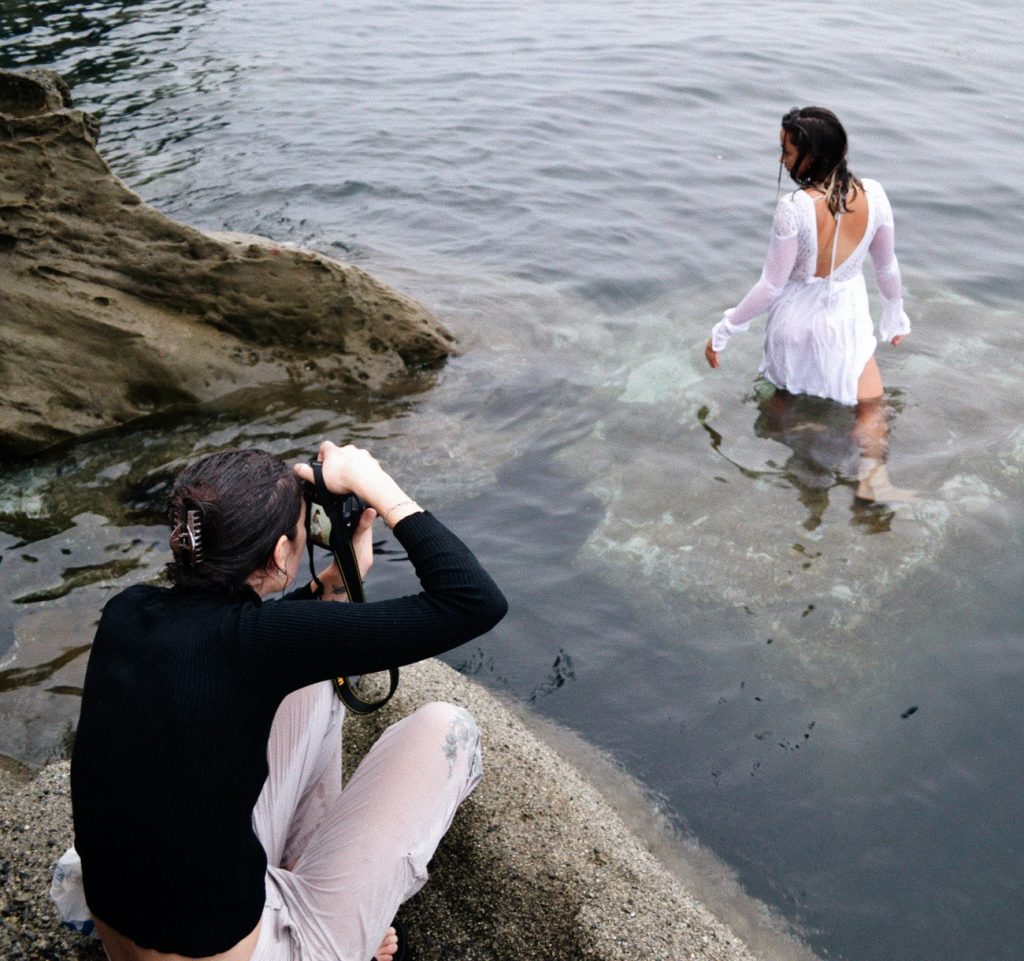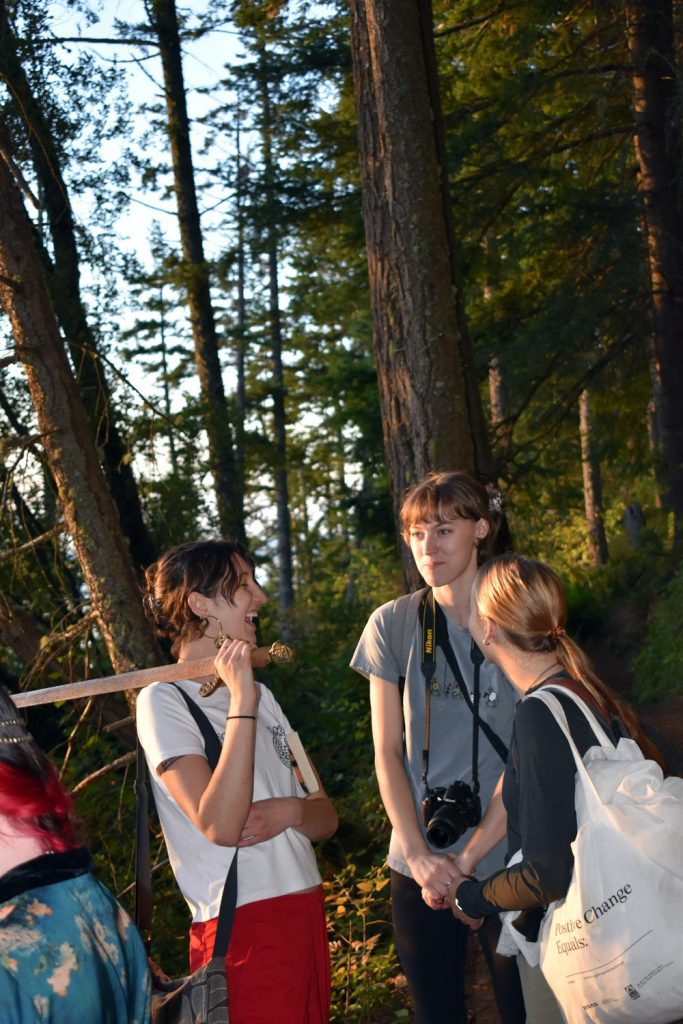From the academic writings of scholars like Edith Hamilton, to popular culture like Percy Jackson’s young adult fiction books, our culture is fascinated with the gods and goddesses whose stories originated 4,000 years ago. Their power lies in their characters, a fascinating crew of magic beings and mortals that still have the ability to speak to us today.
A small but resourceful group of Bellingham women have created The Kalliope Project, a series of artworks breathing new life into some of those ancient goddesses — and what they can teach us about the modern world.
One Woman’s Origin Story
Maesie Halliday was raised in Montana, where her parents were involved in politics, taking on housing and voting rights of rural people. This environment fostered strong political ideals, and in 2019 Halliday started a political science major at WWU, focused on minority communities. When COVID put a stop to her classes, she fell back on her love of reading and writing and watched her do “kind of a 180,” she says. “I don’t want to be doing politics anymore, but I’ve always loved history and I still really want to think about people and their movements and their cultures and their ideas and their beliefs.”

“It’s not that I wanted to neglect the tragedy that is present in the world, but I did want to focus on the parts of human history and the human experience that were joyous and passionate,” says Halliday. As school resumed, she found that a humanities major in the WWU Global Humanities and Religions Department would allow her to explore the philosophy, art, and literature created across the ages, by an array of cultures.
Halliday was drawn to studies of ancient Mediterranean culture, including Greek and Roman mythology, and especially a class on Roman epic poetry. “I was very pleased to notice that the female characters were really, really interestingly written,” she says. She found female characters who were allowed to be complex, and not reduced to only their beauty or their relationship with the main protagonist, who is usually male.

The Birth of an Idea
“I got my gears turning about how I wish people knew how interesting these female characters have been for thousands and thousands of years,” says Halliday. “It’s not like we’ve just come into our power recently; we’ve had power and continually struggled to demonstrate that power for a really long time.”
It was clear that many of her fellow students were excited by the same discoveries, and Halliday decided she would start making connections with them.
She recalls an impulse to invite her new friends to dress-up parties, and those quickly gave birth to a plan to take portraits of each other as characters from the ancient myths. Halliday turned to fellow student and photographer, Sophia Robertson, who agreed to operate the camera and capture the scenes they imagined.

Halliday and Robertson didn’t realize one of their classmates, Anne Lillis, had overheard their conversation — and wanted to be a part of it.
Lillis had moved from California in 2020 to attend Western and was working towards a double major in the humanities and English with an emphasis in creative writing. The shared interests, and shared excitement, led Lillis to ask whether she could attend a photo shoot.
“Maesie said, ‘Yes, come to as many as you want. Do you want to take pictures of the behind-the-scenes process?’” Lillis recalls. “And I said, ‘Absolutely, I do!’ The next day I texted her to ask if I could film the process, too. She said yes, then an hour later said we could show that film somewhere. It totally snowballed in 24 hours, from just a photo shoot into making a documentary.”
Gathering The Goddesses
Just like the documentary, the portrait series quickly blossomed in scope. At first Halliday, Lillis, and Robertson were set to portray Helen of Troy, Dido, and Juno (or Hera), but it didn’t take long for the project to expand. Halliday learned community building from her mother and put those skills to use for her project.
“My thought was: Bellingham is full of artists, so how do I turn this into something that can incorporate as many people as possible? I went from playing dress up with my friends to having over 20 people involved,” says Halliday. “And they’re not only interested in it from an artistic standpoint — they really like the message that women are interesting, powerful, and beautiful.”

Over time, the project attracted enough participants that they were able to create 15 portraits.
In addition to the models and the photography crew, the group also boasts a list of local clothiers and jewelry makers who applied their talents to create the outfits, props, and scenery that transform the models into otherworldly divine beings. They group also worked with local business owners to coordinate locations that allowed them to create the alternate worlds. And they’ve done it all through donations of time and labor, inspired by the passion and joy that drew Halliday to the humanities in the first place.
Sharing Their Results
Drawing on her love of the written word, Halliday created text to accompany each of the images. Her writing provides background that allows the viewer to understand who they’re looking at, and then dives into the stories to draw out the strengths, weaknesses, faults, and accomplishments that make each of the women an archetype of humanity that echoes through the ages.
A premiere for the portraits and the accompanying texts was held in April of 2024 at WWU’s B Gallery, which also featured a display of some of the props and wardrobe used. On the same weekend, Lillis’ film, The Kalliope Project – A Documentary, premiered at Fairhaven’s Firehouse Arts & Events Center. They then moved to the Old Town Cafe, until late May. The series will then be re-homed, in a smaller version, at the 11th Hour Tea & Coffee Bar. All of the portraits and the writing can be viewed at The Kalliope Project’s website; an Instagram page allows a look behind the scenes.








